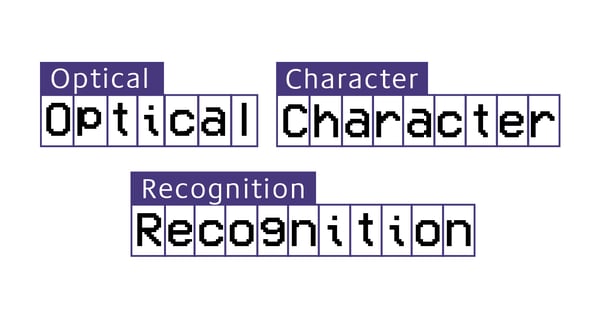
Every legal team needs OCR tools to adequately function in the modern business environment, but OCR tools are particularly relevant for contract management. When a staggering percentage of contracts are still stored or signed on paper, you need a means to digitize these paper agreements so they can be usefully loaded into your contract management solutions.
For those that aren't familiar with the term, OCR refers to optical character recognition. OCR tools are a type of software that can convert pictures of text into regular computer text files, like a Microsoft Word document or Adobe PDF.
When you scan, fax or even photograph a contract, you create an image of that contract that word processors and analysis tools can't read, edit, or analyze. OCR tools can convert these images into regular document files that you can redline, copy and paste from, or merge with other files.
Given how many states, municipalities, and regulatory agencies still require wet signatures for many critical forms and agreements, nearly every legal team has a backlog of scanned paper agreements that can't be loaded into modern contract management tools. (To get an idea of the scale of the problem, just look for the number of .tif files in your contract repository. Those are old-school, black-and-white scans that may well date back to the early 1990s.)
Most modern file-sharing, file-storage, and office productivity solutions come with off-the-shelf OCR tools. For example, either SimpleOCR or FreeOCR is often included with Microsoft Windows. But you get what you pay for, and these tools can struggle to effectively convert older scans or images into useful text files. For example, the letter M will be confused with two Ns, columns will be misformatted, and watermarks will be read as part of the core text. The older and fuzzier the scans, the worse these problems become.
While the built-in OCR tools for solutions like Google Drive and Adobe Document Cloud are more accurate than free OCR tools, even the name brands can struggle to recognize legal-centric terms in scanned text. These solutions combine modern spelling and grammar-check functionality with OCR algorithms to try and "guess" a scanned word when the image is poor. Given how rarefied legal terminology can seem compared to common vernacular, words like indemnity can become identity, and admissible can become admission far too often. (And we haven't even discussed how many times semicolons become commas and vice versa.)
There are specialized legal OCR tools designed to avoid these mistakes, but most of these (very expensive) tools don't integrate with contract management solutions, creating a great deal of manual work converting images to text files, which are then manually loaded into your contract repository for analysis.
Having an integrated OCR tool included with your contact management solution means you get the benefits of specialized legal OCR tools without having to manually shuffle files between systems. It also means your OCR tool benefits from the artificial intelligence that runs your contract analysis, so the OCR tool will not only improve its performance with time, but will be more likely to recognize the legal terminology and standard language you regularly employ in your legal documents.
LinkSquares offers a specialized, integrated OCR tool as part of our Analyze contract analysis solution. The same AI that helps you stay on top of key contact language helps find that language in scanned PDFs and images.
If you want to see the fastest, most-accurate legal OCR tool on the market and find out how it integrates with the most sophisticated AI contact analysis solution available, contact LinkSquares today.
Subscribe to the LinkSquares Blog
Stay up to date on best practices for GCs and legal teams, current events, legal tech, and more.



